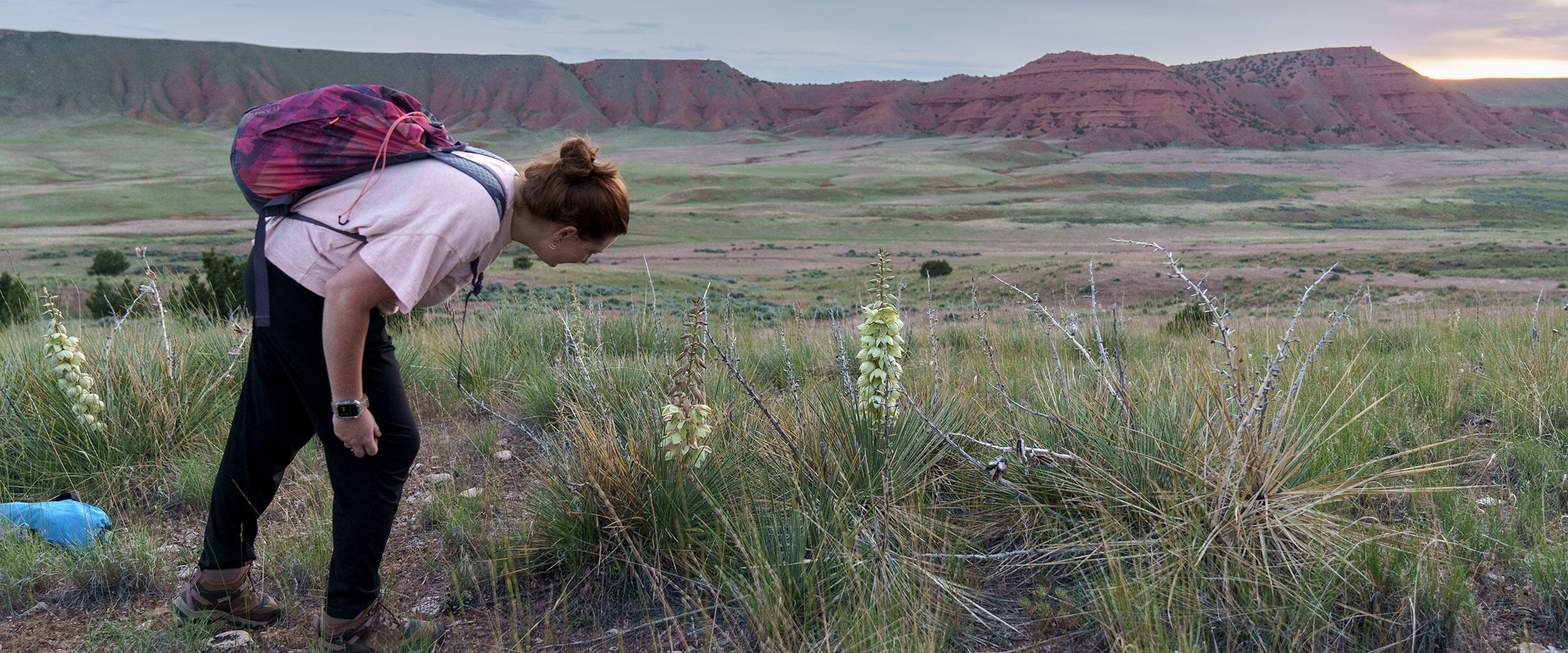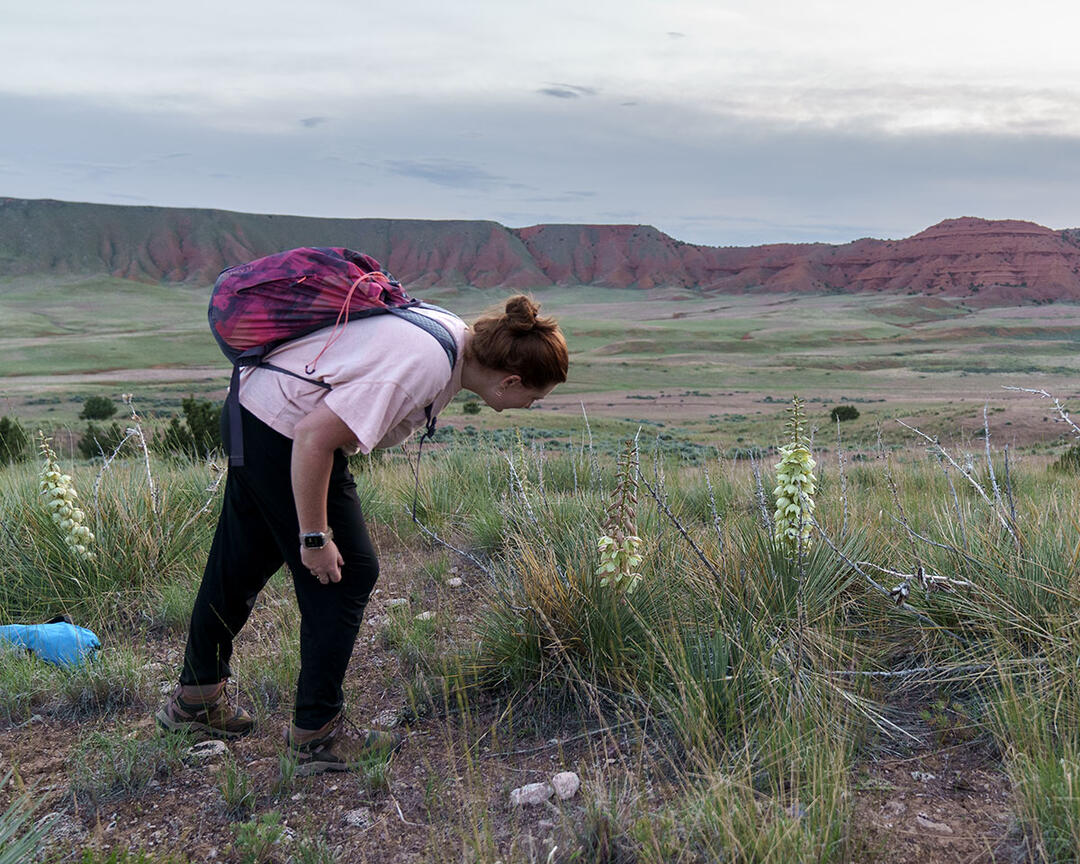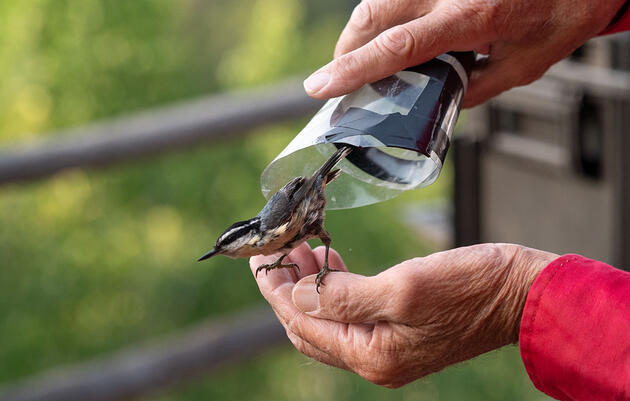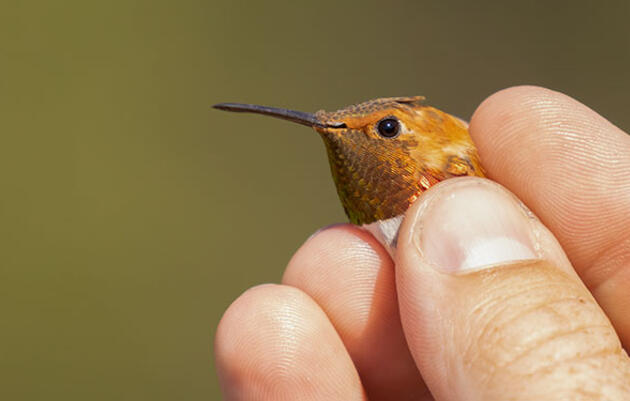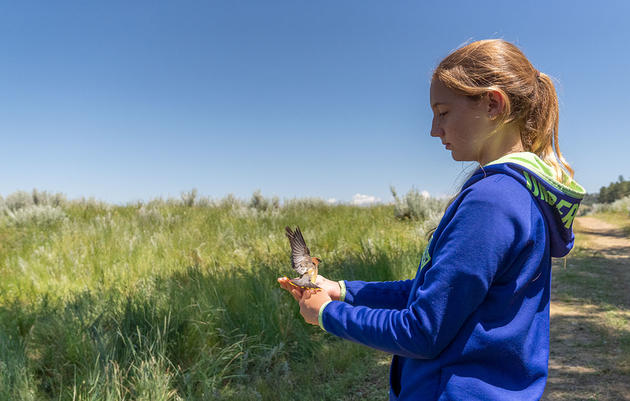This past summer I had a great opportunity to work for Audubon Rockies as their outreach and banding technician. I first found out about the position through Zach Hutchinson. He came to the science program where I was working during the spring semester to talk to my students about owls. He told me about the position and I immediately wanted to do it. Banding wild birds!? Sign me up!
This job was so fun and throughout the summer, I kept asking myself, “Am I really getting paid to do this?” While my main job was banding songbirds, I had a variety of other opportunities, such as participating in Wyoming BioBlitz, helping with K-12 science camps around Wyoming and South Dakota, hummingbird banding, and dove banding.
The two banding stations where I primarily worked were located close to Casper, Wyoming. One was at Edness Kimball State Park, and the other was at a private cabin located on Casper Mountain. A third station I helped with was at Keyhole State Park. Bird banders catch birds with mist nets, an extremely fine mesh that’s difficult for the birds (and myself) to see. Each station consisted of 10 nets that were checked every 40 minutes, usually starting at 5:30 am and going as late as 2:00 pm.
When banding, the order of priorities is human safety, bird safety, bird comfort, and finally, human comfort. The nets must stay temperate and dry, which is sometimes a challenge in Wyoming, so we were constantly monitoring net temperature, precipitation, and wind. The nets we used were approximately 10 feet tall and 20 feet long and sat one to two feet off the ground. They had five pockets running the length of the net with extra fabric that caught the birds without harming them.
Once a bird was tangled in the net, it was the bander’s job to untangle or extract them, a job which proved to be much more difficult than I could ever have imagined. The untangling is the riskiest part for the bird’s safety. However, with proper training and a master bander to assist when needed, I soon felt confident when handling and extracting birds and I began looking forward to the challenge. The sense of accomplishment after extracting a bird is such an amazing feeling!
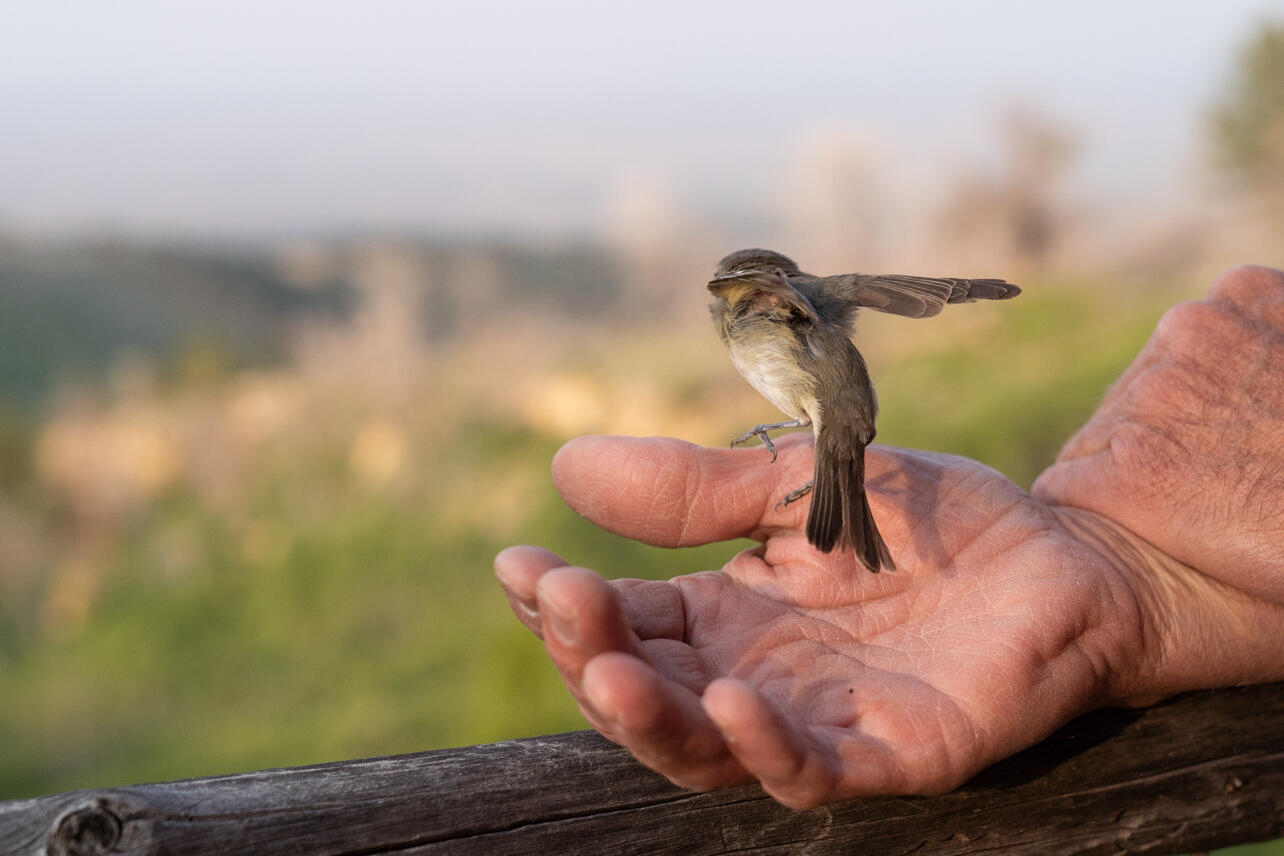
Once untangled, the birds were placed in cloth bags that helped to keep them safe and calm. Then they were taken to be banded and processed. A variety of data was taken when banding, including species, age, sex, weight, fat reserves, whether they have eggs, and if so, what stage they were at in raising their offspring. The birds were then released from the banding station with their new band and some alien abduction stories to tell their friends! This data contributes to the continent-wide collaborative program, Monitoring Avian Productivity and Survivorship (MAPS).
Through this tech position, I was able to assist Wyoming BioBlitz 2023, a biological survey where organizations and volunteers come together to survey all species of plants, insects, birds, and other organisms in an area. This year it was held at the Medicine Lodge Archeological Site in Hyattville, Wyoming, which I found to be one of the prettiest and most biodiverse places in the state. This opportunity was very informative and so much fun! Survey walks happened throughout the day led by different biologists who helped identify the organisms we saw. I was surprised by how many different organisms you could find in just three steps! It was amazing! We also set up the mist nets and did a banding demonstration for the BioBlitz participants, which quickly became one of my favorite things to do.
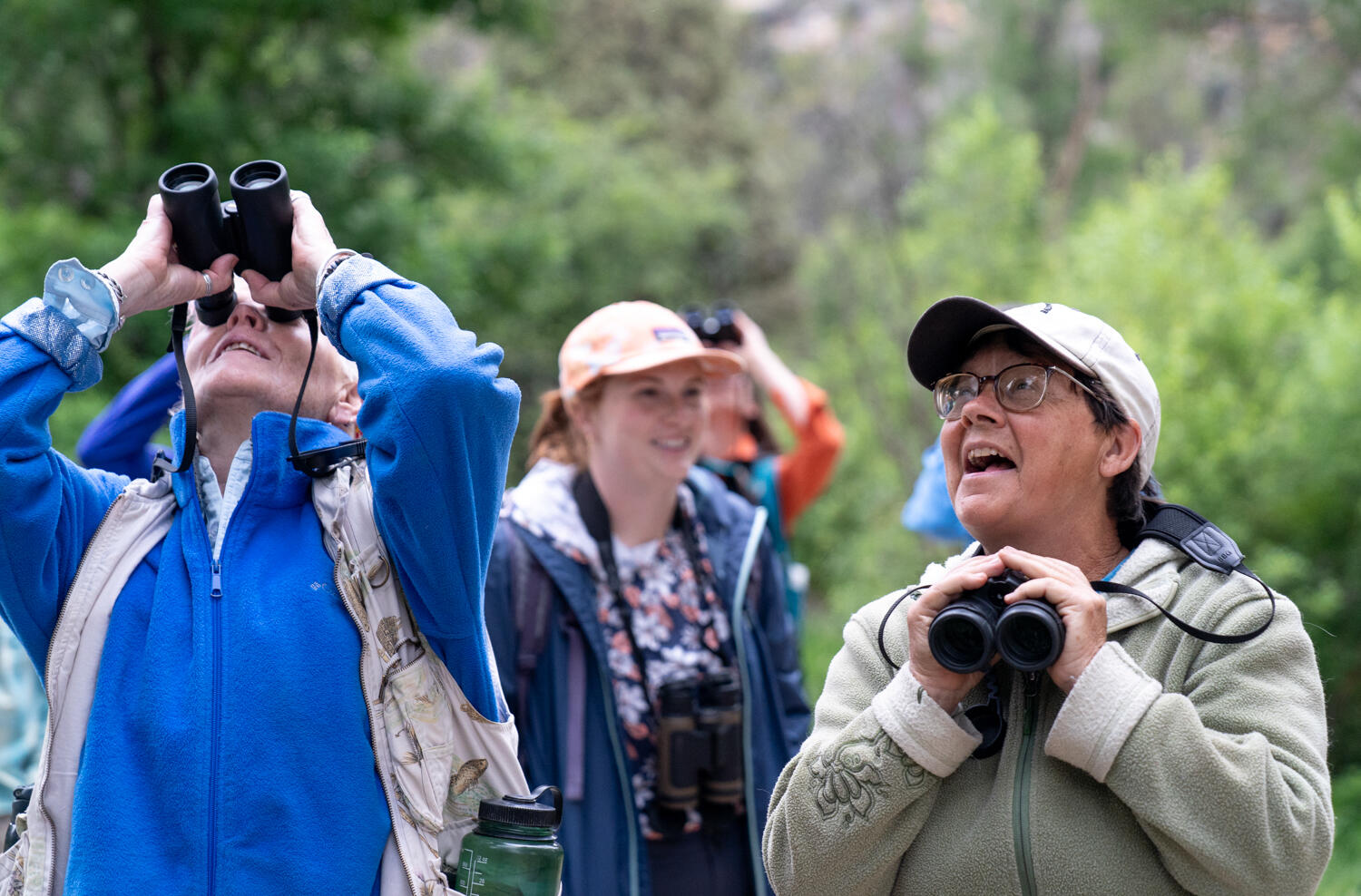
These demonstrations were also made available for children at youth science camps around Wyoming and South Dakota, just across the Wyoming border. We would set up the nets and while we were waiting for birds we would catch microorganisms in nearby streams and identify them. We would also provide a bird migration obstacle course where participants would have to maneuver around skyscrapers (trees) and over mountains (large rocks) to migrate safely. Once we would get a bird in a net, the children would get so excited. It was rewarding to get to see their interest and concern for the birds. It’s uncommon for people to have up-close interactions with wild birds where they are healthy and uninjured.
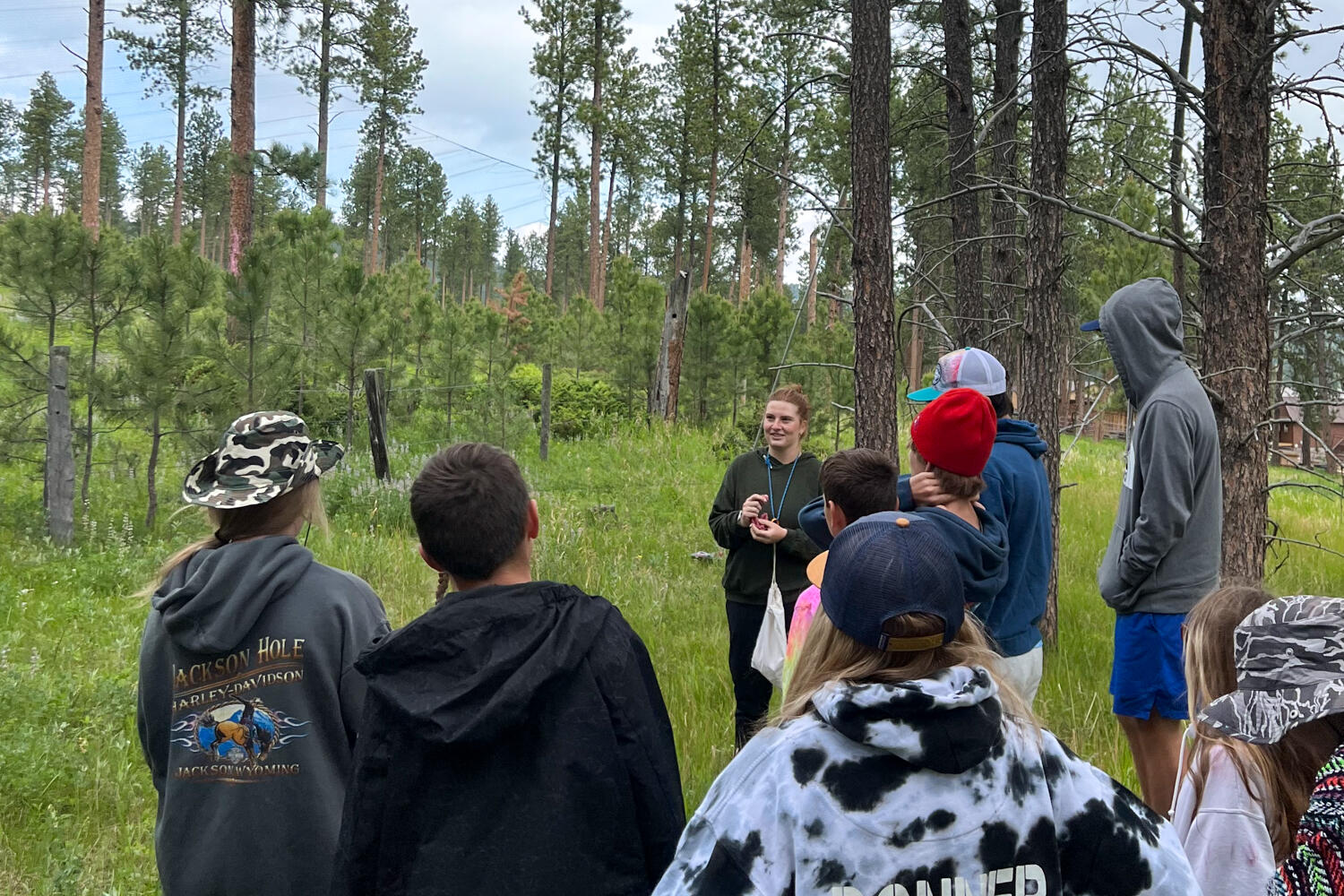
I had the pleasure of working under Jacelyn Downey. I watched her educate the groups about the birds she held in such a way that they were able to relate. The students were amazed! She would tell them its species, sex, age, and if it was a parent, as well as give it a personality to help them understand birds better. When she did this, I noticed the participants realized how hard it can be to be a bird, especially native birds, and it was amazing to watch their appreciation for nature grow in a place-based education setting.
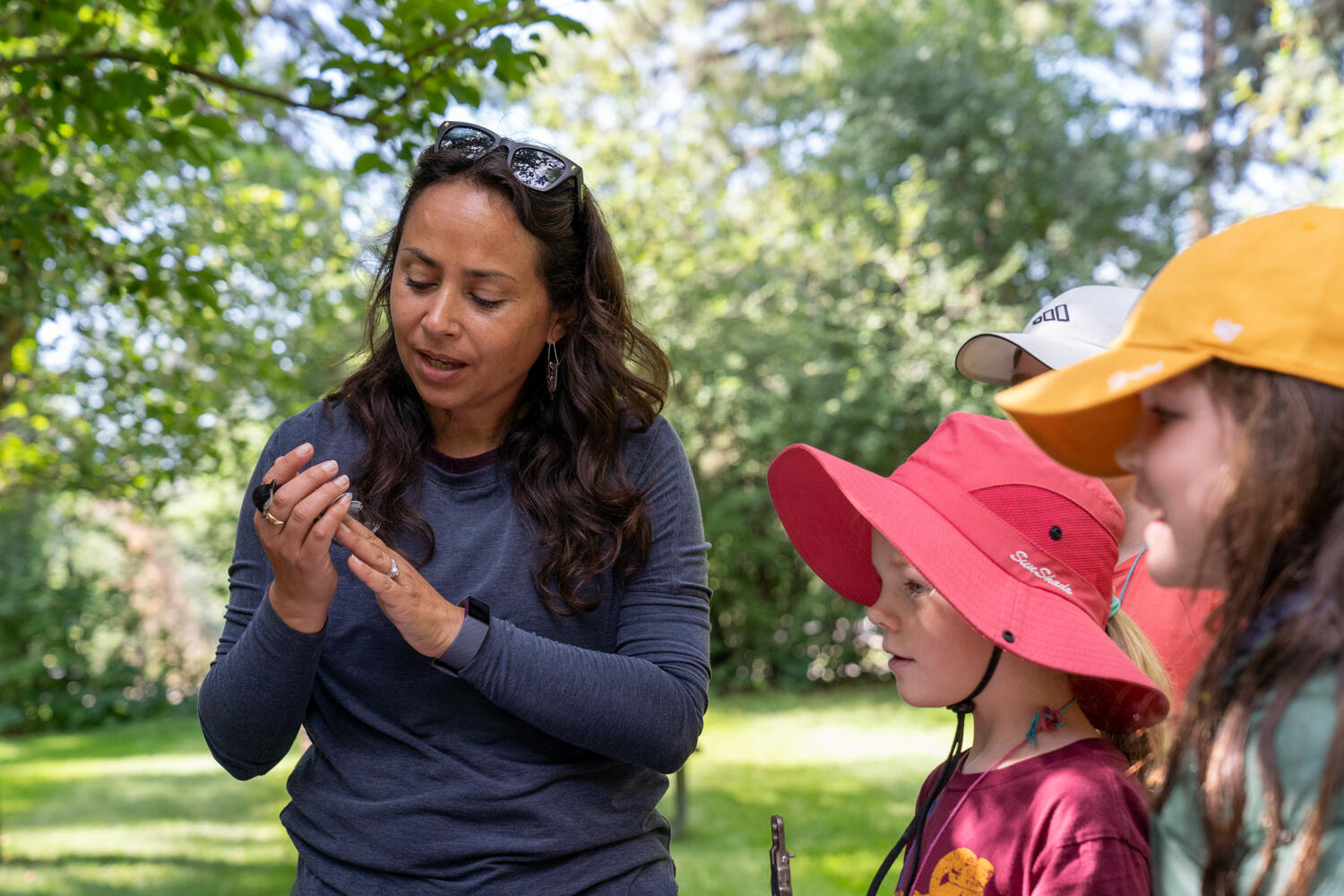
The summer outreach and banding technician position was such a great experience! I would recommend it to anyone interested in bird conservation or Audubon. This amazing opportunity can connect you to so many great people doing great work! Thanks again to my wonderful leaders, Jacelyn Downey, Zach Hutchinson, and Ellis Hein! I learned so much from all of you and am so grateful for your guidance and for providing me with this valuable experience!

